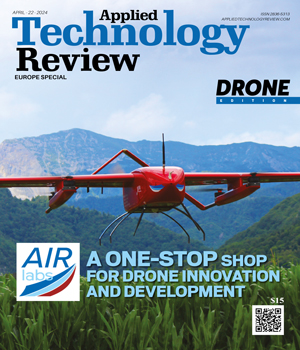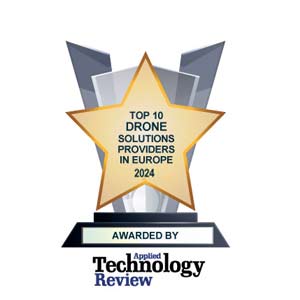The drone solutions market is taking flight, buoyed by breakthroughs in autonomous capabilities, sensor advancements and seamless data integration. Powered by AI and computer vision technologies, drones can now navigate complex environments, detect obstacles and execute tasks with minimal human intervention. This autonomous revolution is transforming drone-based operations, reducing costs and unlocking new applications across industries. In warehouses, for instance, autonomous drones are streamlining inventory management with enhanced accuracy and speed.
Sensor evolution is also reshaping how drones capture data. High-resolution cameras, thermal imaging, LiDAR and specialised payloads empower drones to collect incredibly detailed environmental information. Businesses are leveraging these rich data insights for diverse use cases. Farmers utilise multispectral drone imagery to optimise crop health and yields. Construction firms employ drone-based mapping and surveying to precisely track project progress.
The integration of advanced data analytics is amplifying the impact of these drone solutions. Powerful algorithms extract actionable insights from vast drone-collected datasets. This real-time intelligence enables businesses to optimise operations and make data-driven decisions. In logistics, the analytics powers fleet optimisation software to plan the most efficient routes for drone deliveries.
Driven by these trends, the drone market size in Europe is expected to reach $11.07 billion by 2029, growing at a CAGR of 8.62 percent.
This edition of Applied Technology Review examines the latest developments in the drone solution provider market across Europe.
It features a thought leadership article by Oliver Pulcher, Director of Corporate Development, at DFS Deutsche Flugsicherung, highlighting the importance of integrating unmanned aerial systems (UAS) or drones into the airspace in a safe and orderly manner by synchronising drone traffic management (UTM) systems with traditional air traffic management (ATM) systems, processes and procedures.
It also features an article from Tim Komkowski, Head of Industrial Engineering, Digitalisation & Transformation, Thyssenkrupp Marine Systems, exploring the evolution of computerised numerical control (CNC) machining and its integration with emerging technologies such as artificial intelligence (AI), Internet of Things (IoT), and machine learning to drive precision, efficiency, and competitiveness in the aerospace and defence industries.
In this edition of Applied Technology Review, we also bring you the story of AIRlabs Austria, a leading innovation laboratory for unmanned aerial vehicles, positioning as a one-stop shop for drone innovation. The company offers comprehensive support along the entire value chain, from research and development to testing, validation, integration and certification of aerial vehicles, with a unique multi-site testing infrastructure covering various terrains and conditions.
This edition also brings to you the story of the top drone solutions providers in Europe in 2024. We hope you find the right partner to meet your organisation’s needs.
Let us know your thoughts!


















